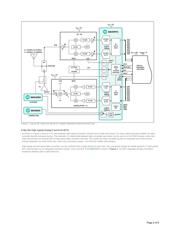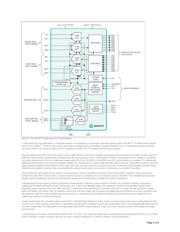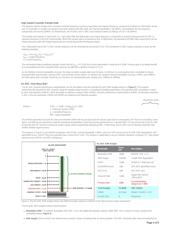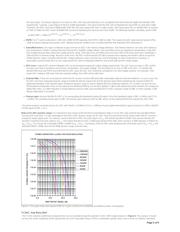herunterladen

Click here for an overview of the wireless components used in a typical radio transceiver.
Keywords:
data converter, mobile, wireless, wireless communication, analog front end, AFE, LTE, ADC, DAC, MIMO, QAM, OFDM
APPLICATION NOTE 5519
NAVIGATE THE AFE AND DATA-CONVERTER MAZE IN MOBILE
WIRELESS TERMINALS
By:
Damian Anzaldo, Principal Member of Technical Staff—Field Applications, Maxim Integrated
Abstract: High-speed and low-speed data converters serve critical functions in modern broadband mobile radios. This application note outlines how to
determine high-speed data converter performance requirements in baseband sampling radio architectures. Also, system partition strategies and
advantages are outlined when considering a high-speed analog front-end (AFE) solution.
A similar version of this article appears on
Mobile Dev & Design (MD&D), May 20, 2010.
Introduction
Mobile broadband wireless communication systems employ several techniques for improving spectral efficiency. To achieve high data rates, yield optimal
system capacity, and ensure reliable quality of service (QoS), modern wireless communication systems use variable channel bandwidths (BW = 1.25MHz
to 20MHz) with high-order modulation (16QAM to 64QAM) and code-division or orthogonal frequency-division multiple access (CDMA, OFDMA) as well
as scalable, smart antenna technology (e.g., multiple-input multiple-output or MIMO, spatial diversity).
3GPP standards UMTS, TD-SCDMA, and long-term evolution (LTE) as well as others like IEEE
802.16e, IEEE 802.11n, and IEEE 802.11ac are some
common systems that use these techniques. As an example, a 4G LTE radio can achieve a peak data rate greater than 100Mbps with robust
performance using 64QAM modulation, orthogonal frequency-division multiplexing (OFDM) with 2048 subcarriers, a 20MHz channel bandwidth, and a
2
×2 MIMO architecture.
High-order modulation with OFDM, wide-channel bandwidths, and MIMO architectures all conspire to demand higher performance from the receive
analog-to-digital converter (Rx ADC) and the transmit digital-to-analog converter (Tx DAC). The high-speed data converter requirements include faster
sample rate, higher dynamic range, improved spectral performance, and multiple channels. Furthermore, since the end-product communication
equipment is mobile and battery-powered, the data converters must be low power and miniature in size. These factors present a maze of design
challenges when selecting the right high-speed data converter solution. The following topics present a methodology to help designers navigate these
challenges.
Radio and Data Converter Functions
Small size, low power, and low cost are important design goals in mobile wireless products like smartphones, data cards, embedded radios, public safety
radios, tactical military radios, or mobile satellite radios. Because of this, a direct-conversion zero intermediate frequency (ZIF) architecture is a common
radio solution. Compared to heterodyne radios, the ZIF architecture eliminates multiple intermediate frequency components such as IF mixer, VGA, LO
synthesizer, and image reject filter. This elimination lowers cost and reduces size. Furthermore, in applications with variable channel bandwidths, like
LTE, the ZIF architecture lends itself to programmable baseband filtering.
Figure 1
illustrates the radio lineup used in a typical mobile application. The radio architecture, a ZIF receiver and quasi-direct conversion transmitter,
requires a dual-channel high-speed Rx ADC and a dual-channel high-speed Tx DAC for in-phase and quadrature-phase (I/Q) baseband signal sampling
and construction. Other low-speed converters are used for RF front-end gain control and ancillary analog signal measurements like RF power amplifier
temperature and transmitter RF power level. The converter’s digital bus interfaces with a digital baseband processor in the form of a field-programmable
gate array (FPGA), a digital signal processor (DSP), or an application-specific integrated circuit (ASIC). The digital baseband processor performs signal-
processing functions like channel coding, modulation mapping, and digital filtering. As shown in Figure 1 a single-mode radio might require up to eight
data converter channels.
®
Page 1 of 8
Verzeichnis








